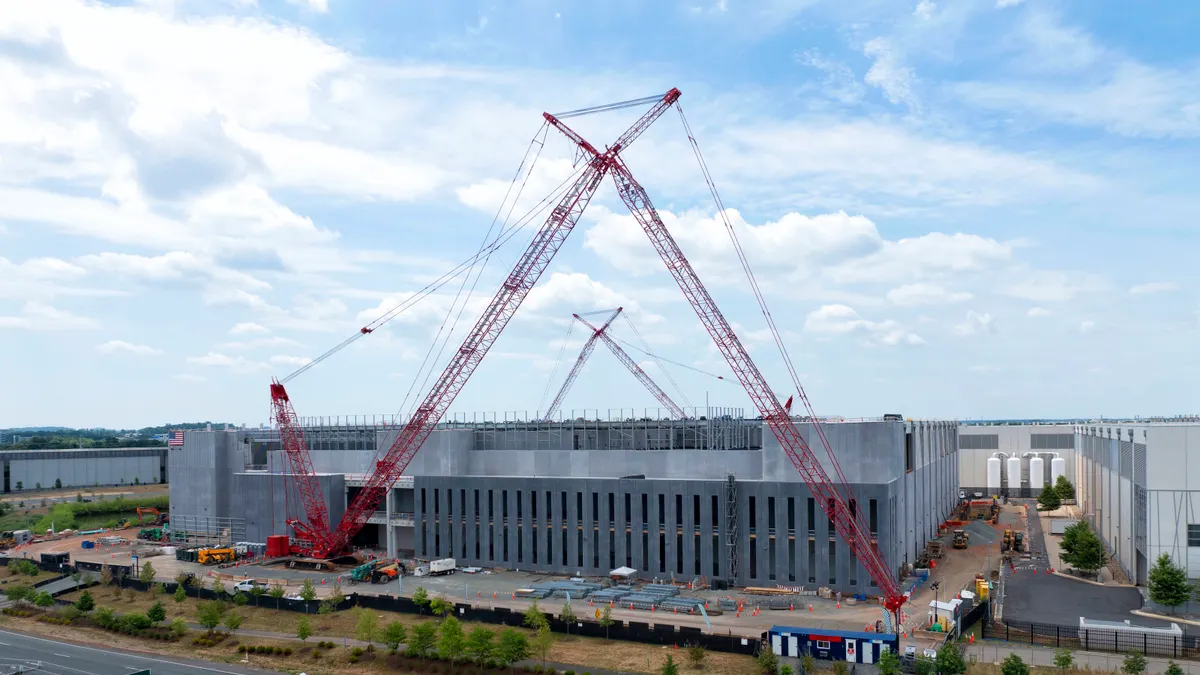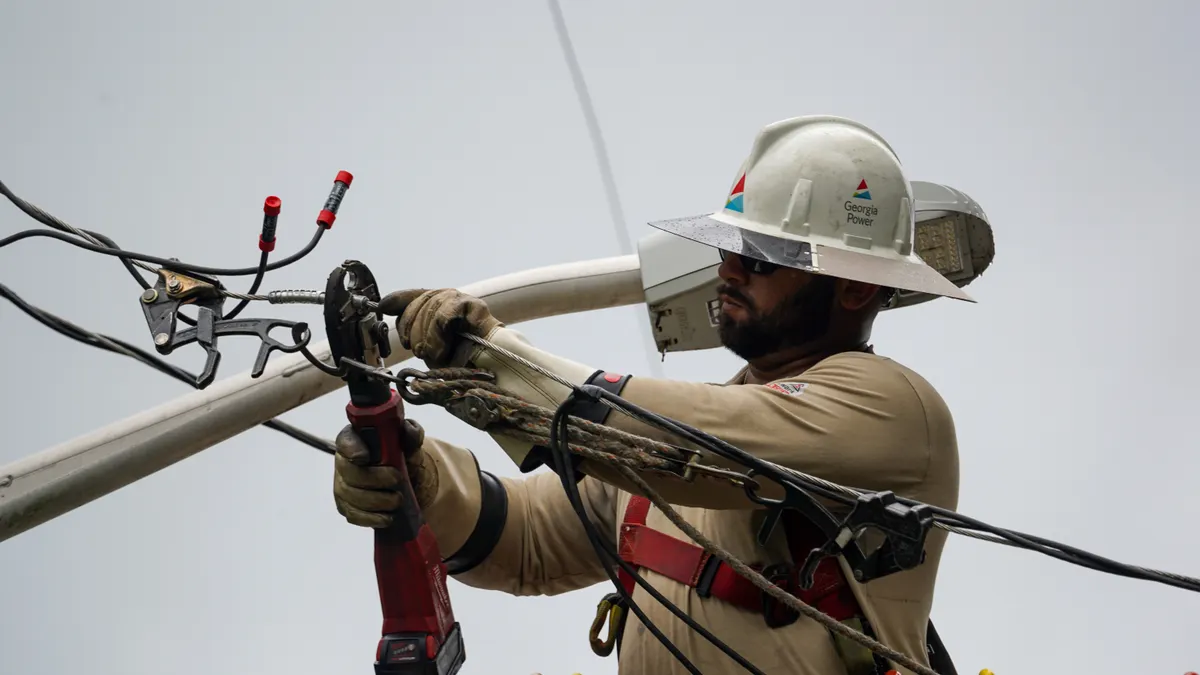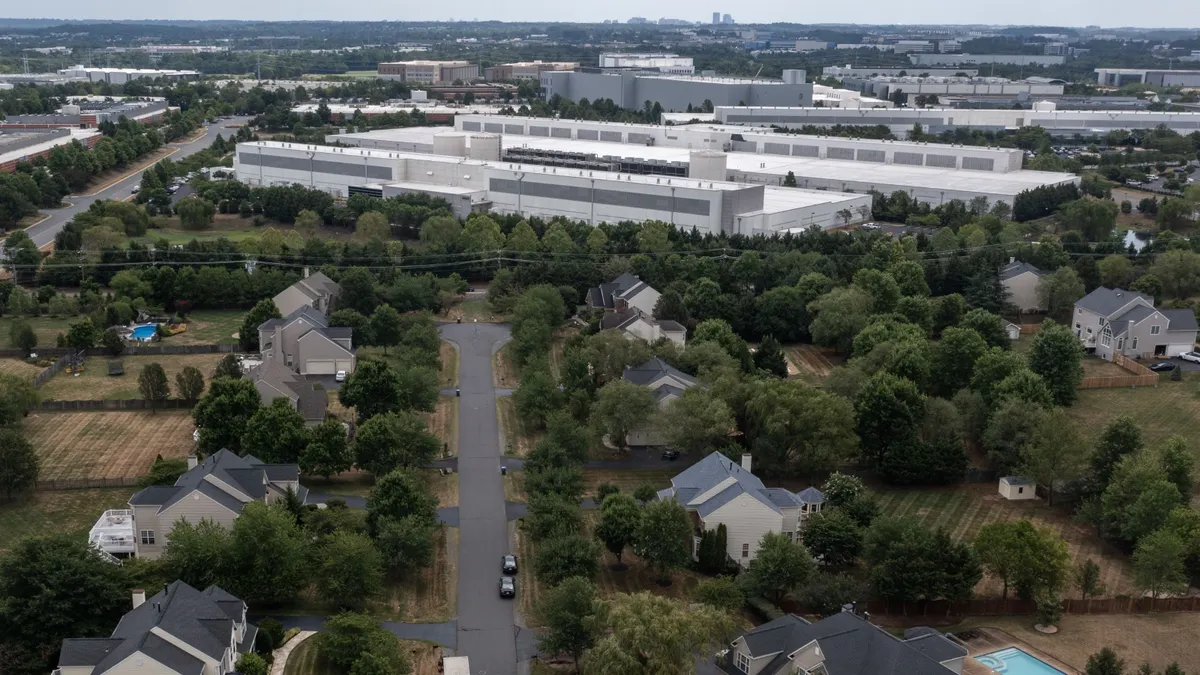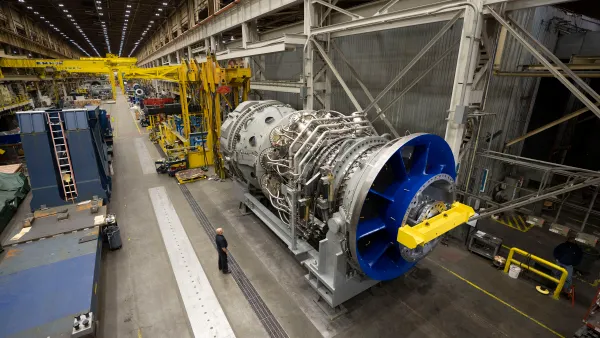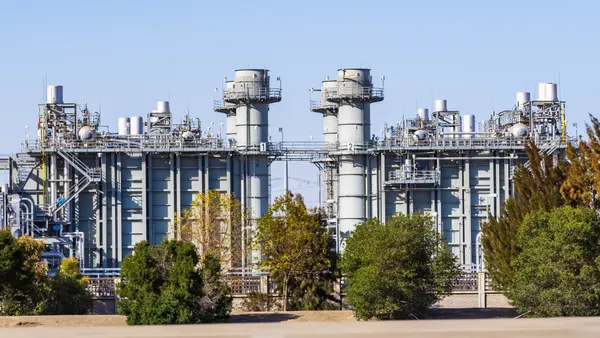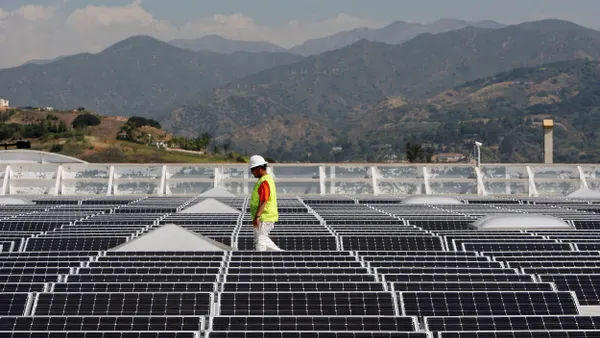Dive Brief:
- Prometheus Hyperscale, a data center developer, is teaming up with Conduit Power to deploy bridge and backup power infrastructure to serve at least two liquid-cooled data centers it’s building at ENGIE battery installations in Texas, the companies said on Sept. 3.
- Conduit and Prometheus said the deployments could eventually scale up to 300 MW of gas-fired generators and batteries at each site. They expect the first deployment to come online next year and additional deployments in “2027 and beyond.”
- Conduit’s hybrid power infrastructure will take advantage of existing interconnection capacity at the ENGIE sites, allowing Prometheus to begin operations before connecting to the grid, Conduit Power CEO Matt Herpich said in an interview.
Dive Insight:
Data center operators facing years-long grid interconnection queues are increasingly turning to bridge power solutions, often anchored by relatively small natural gas generators and grid-scale batteries.
As Conduit’s timeline suggests, the wait for smaller gas generators is significantly shorter than that for larger gas turbines, which turbine manufacturing executives have said are backordered for several years.
“Creative energy mixes can transform projects that might otherwise be unviable into attractive opportunities for hyperscale developers [with natural gas infrastructure] developed first to ensure a stable, on-demand power source,” said Duane Morris partner Robert Montejo, a real estate lawyer who works with data center and energy clients.
David Carroll, chief renewables officer and senior vice president for ENGIE North America, said in a statement that the company’s “collaboration with Prometheus demonstrates our shared approach to finding innovative approaches to developing, building and operating projects that solve real world challenges.”
While stressing the timeline is “not set in stone,” Herpich said Conduit could deploy its bridge power solutions for a five-year initial term as Prometheus builds out its first two data center campuses. Once those facilities connect to the grid, the gas engines could remain as backup or move to other sites requiring bridge power, he added.
Conduit’s gas generators and batteries would likely operate independently from ENGIE’s batteries, with the generators providing baseload power for the data halls and the Conduit batteries smoothing power flows and providing post-outage black start capabilities, Herpich said.
Despite buzz about the potential for utility-scale power infrastructure behind the meter at large data center campuses, Herpich said hyperscalers tend to prefer hybrid or colocated power solutions that pair onsite generating resources with a connection to the transmission grid. Fully “islanded” power infrastructure redundant enough to match the reliability of the main grid is “priced way beyond what most of these guys want to pay,” he said.
Hybrid power solutions also help data center developers and end users power up faster while remaining aligned with ambitious emissions-reduction targets, Montejo said.
“All of the hyperscalers have strict sustainability goals, [and] blending natural gas, solar and batteries addresses the need for cheap, reliable power and reduced carbon emissions,” he said.
Prometheus is no exception. The company says its flagship data center campus, a 1.2-GW facility under development in Wyoming, will be fully carbon-neutral thanks to a combination of “low-carbon, low-water-intensity natural gas” generation backed by verified carbon offsets.
“Prometheus is committed to developing sustainable, next generation digital infrastructure for AI … we cannot do this alone,” Bernard Looney, chairman of Prometheus Hyperscale and former CEO of oil company BP, said in a statement. Looney nodded to ENGIE’s “existing renewable energy assets and expertise as a major player in the global energy transition.”
For Conduit, data centers are a new market. Herpich said his company has about 20 behind-the-meter and merchant gas and battery installations in operation or under development at oil and gas production sites in West Texas, each around 10 MW.
The first of those deployments will connect to the Electric Reliability Council of Texas grid later this year, Herpich said. They will take advantage of ERCOT’s interconnection process for generating facilities under 10 MW, which typically takes 12 to 18 months, Herpich said.
Those deployments support a longer-term electrification trend in the United States’ biggest hydrocarbon production zone while helping producers “secure a new, profitable outlet for … natural gas, via power markets,” Conduit says.


